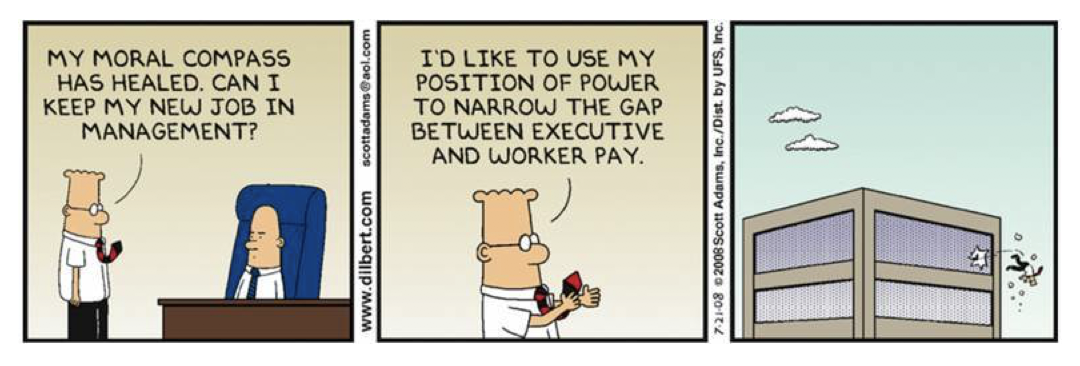Mission Command, Management Gaps and High Flying!
13/11/2018

We’ve blogged about implementing a Mission Command approach to Leadership in the past:
On our travels we’ve heard some people say, “Oh, we’re already doing something like this already (emphasis on already)!”, or “Ah, we don’t want to send any cross-messages with the (re)organisation programme (read Transformation, Change, Cost-cutting … oops) we’re running”.
Well, “something like this” isn’t good enough: There’s one motor manufacturer that makes two types of cars that are “something like” each other, they both have an engine, gearbox, 4 wheels, two doors and a soft-top. BUT one is a Fiat 500 the other is a Ferrari LaFerrari. Fundamentally different in so many ways!
And, Mission Command is not a programme – it’s something to be built into the DNA of an organisation.
So, how effective are we in embedding Mission Command throughout the organisation? Can we measure this effectiveness? We believe we’ve started to build a Measurement Method for establishing just how effective we are in this, and it draws on academic work by Luc Hoebeke who states “One of management’s key tasks is to build coherence in an organisation”. Can we measure “coherence”?
Now Mission Command involves a number of aspects, but one key element is that “Purpose”, or “Central Intent”, must be communicated clearly from the centre out to the front-line. And each manager at any level must implement the, let’s call it, the “two-level rule”. As a manager, I need not only to understand my boss’ Intent, but his/her boss’ intent as well, and so on out to the front-line.
So we’ve blogged about using our Maturity Matrix (used in conjunction with our Readiness Assessment (for change)):
https://blogs.cranfield.ac.uk/leadership-management/cbp/its-for-the-journey
In carrying out the most extensive Readiness Assessment ever to date, we are able to build a picture of where certain categories of employees are on the Maturity Matrix (5 levels across 5 key thematic areas 1. Leadership & Organisation, 2. Understanding Business as a Series of Processes, 3. People & Culture, 4. Continuous Improvement Methods, Techniques and Tools and 5. Diversity & Inclusion). See example below:

Note: only one response from ACC level – means we have to place less emphasis on this result for now.
Without going into too much detail, for thematic 1. Leadership & Organisation, the separation between Superintendent level (those close to the centre) and Constable level (those at the front-line) is around 6 points (and, on the scale on the left of the chart, each level in the Maturity Matrix spans 8 points) – almost one whole level in Maturity difference. Our proposition is that if Mission Command had thoroughly percolated throughout this organisation, there would be close to no difference between the ranks – since Intent would be clear and understood two levels above and below at each level.
There are a series of 10 statements presented for response in each of the 5 themes. It is worth noting that responses to 3 statements were the greatest drivers behind the divergence (note the opposite of convergence) between the centre and the front-line, namely:
- We encourage our people to take ownership of local problems affecting performance
- Senior Managers provide guidance and support for local decision making
- People have to ask senior management for permission to act in this organisation
And one of 3 key statements that drew much agreement about was:
- The organisation is controlled by the experience and opinion of senior managers
So this organisation has some ways to go, we would argue, in order to thoroughly embed and embrace Mission Command. And the way to measure this is to look for a horizontal line joining the centre to the front-line in the chart above, signifying good coherence between the ranks, and to see that line moving up through the levels towards 40 on the scale as they apply various learning/improvement interventions
We have made the mistake in the past of trying to effect change without going through this understanding using the Readiness Assessment. We didn’t quite end up airborne like the unfortunate Dilbert above, but we did feel like we were well and truly jettisoned out of one particular organisation at that time!
Categories & Tags:
Leave a comment on this post:
You might also like…
Keren Tuv: My Cranfield experience studying Renewable Energy
Hello, my name is Keren, I am from London, UK, and I am studying Renewable Energy MSc. My journey to discovering Cranfield University began when I first decided to return to academia to pursue ...
3D Metal Manufacturing in space: A look into the future
David Rico Sierra, Research Fellow in Additive Manufacturing, was recently involved in an exciting project to manufacture parts using 3D printers in space. Here he reflects on his time working with Airbus in Toulouse… ...
A Legacy of Courage: From India to Britain, Three Generations Find Their Home
My story begins with my grandfather, who plucked up the courage to travel aboard at the age of 22 and start a new life in the UK. I don’t think he would have thought that ...
Cranfield to JLR: mastering mechatronics for a dream career
My name is Jerin Tom, and in 2023 I graduated from Cranfield with an MSc in Automotive Mechatronics. Originally from India, I've always been fascinated by the world of automobiles. Why Cranfield and the ...
Bringing the vision of advanced air mobility closer to reality
Experts at Cranfield University led by Professor Antonios Tsourdos, Head of the Autonomous and Cyber-Physical Systems Centre, are part of the Air Mobility Ecosystem Consortium (AMEC), which aims to demonstrate the commercial and operational ...
Using grey literature in your research: A short guide
As you research and write your thesis, you might come across, or be looking for, ‘grey literature’. This is quite simply material that is either unpublished, or published but not in a commercial form. Types ...






